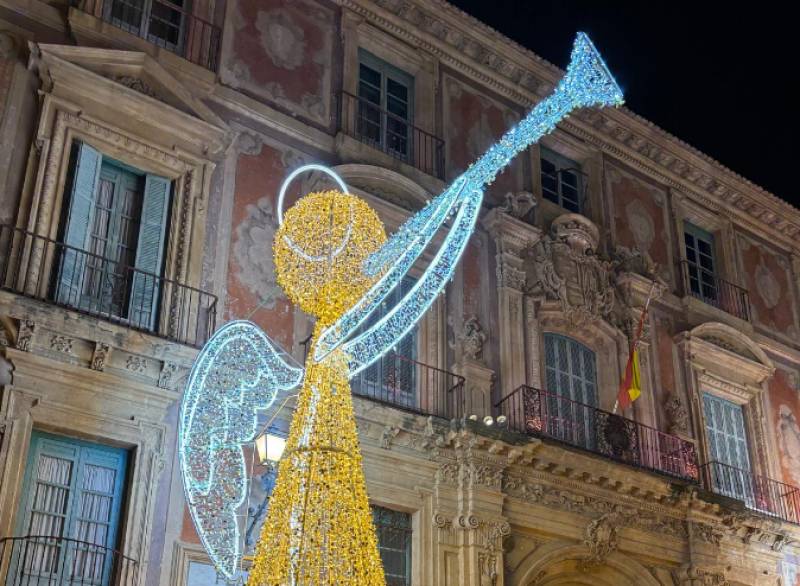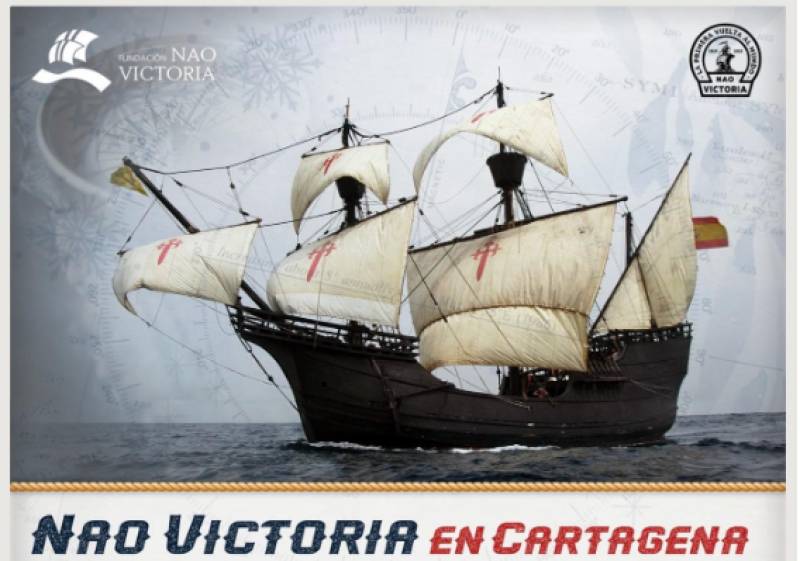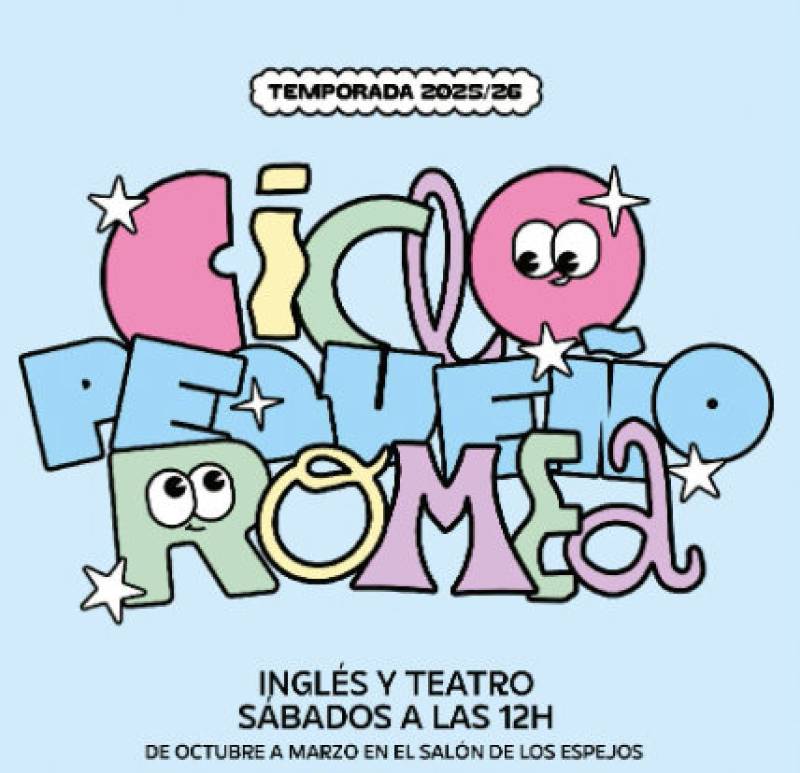

- EDITIONS:
 Spanish News Today
Spanish News Today
 Murcia Today
Murcia Today
 Alicante Today
Alicante Today
Molino de Cebollo or Molino de Teodoro , Cieza
The Cebollo or Teodoro mill
The Teodoro mill is an important vestige of Cieza’s agricultural heritage and is not only one of the oldest, but also one of the best preserved watermills in the Region of Murcia, having been in use from the 15th to the 20th centuries. Although there are many mills and watermills in the municipality, it is unusual to find an original building in such a good state of preservation, as most mills fell into disuse as agricultural practices changed and were abandoned.( See History of Cieza)
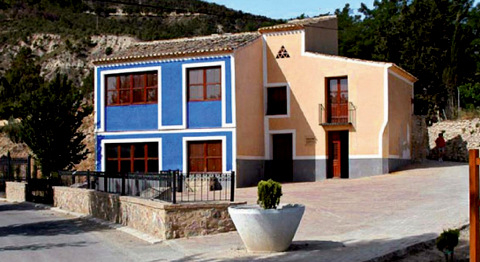 The building has been completely restored and converted into a museum, retaining an impressive collection of original milling machinery intact and can be visited as part of a guided tour of the town.
The building has been completely restored and converted into a museum, retaining an impressive collection of original milling machinery intact and can be visited as part of a guided tour of the town.
The mill is located on the right hand bank of the River Segura, at the foot of the old town built on La Atalaya,  and in an area known as the Paraje del Estrecho.
and in an area known as the Paraje del Estrecho.
Although the mill is currently known as the Molino de Teodoro ( the family name of one of the last owners) it has been documented with various names since its existence was first recorded in 1507. It appeared for the 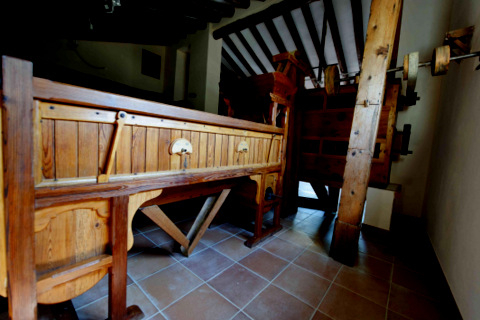 first time in an inventory carried out by the Encomienda de Santiago, in which the mill is referred to as being a new construction, and named as the Molino de los Regidores Perpetuos.
first time in an inventory carried out by the Encomienda de Santiago, in which the mill is referred to as being a new construction, and named as the Molino de los Regidores Perpetuos.
This particular point of history is an important time for Cieza, which was undergoing a regrowth and repopulation, following the end of the occupation of Granada by Moorish forces, finally defeated by the 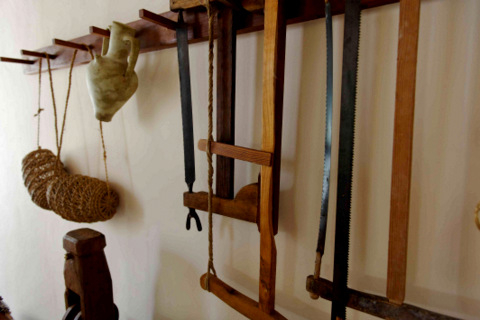 Catholic Monarchs of Isabella and Ferdinand in 1492. During 1477 Cieza had been attacked and invaded by the forces of Granada, and the entire population killed or taken to Granada for onward sale and didn´t begin any sort of recovery until 1494 under the new monarchs. After this date, the town began to
Catholic Monarchs of Isabella and Ferdinand in 1492. During 1477 Cieza had been attacked and invaded by the forces of Granada, and the entire population killed or taken to Granada for onward sale and didn´t begin any sort of recovery until 1494 under the new monarchs. After this date, the town began to  rebuild and this windmill would have been one of the early structures put in place to service the needs of the new population.
rebuild and this windmill would have been one of the early structures put in place to service the needs of the new population.
Later on the mill appears under the name of the Molino del Santo and then later on in 1559 as the Molino de Marín, as the Molino de la Andelma in1609 and the Molino del Cebollar in 1830, and is often still referred to  as the Molino de Cebolla. It was acquired by the García family at the beginning of the 20th century, at which point it became known by the name of it’s owner, Teodoro.
as the Molino de Cebolla. It was acquired by the García family at the beginning of the 20th century, at which point it became known by the name of it’s owner, Teodoro.
Water is fed in by the Acequia de la Andelma, one of the most important elements of the water infrastructural network within the municipality, which was certainly in use during the Islamic occupation of the town and is believed to date back to the Roman infrastructure in use around 2000 years ago when Roman villas produced crops on the banks of the River Segura.
From the acequia de la Andelma a sluice gate can be opened to bring the waters down to the mill buildings below, dropping down into the box from which the drive wheels were propelled, and these in turn, through a vertical axis, to drive the rest of the machinery and the millstones and machinery inside the mill.
Structure of the Molino de Teodoro
The structure of the mill building itself is rectangular and operations are distributed on two floors, the top area originally acting as a residential dwelling, whilst the lower floor was the location of the grinding activity.The mill retains all its original interior machinery, right through from the lifts used to the cleaning and separating 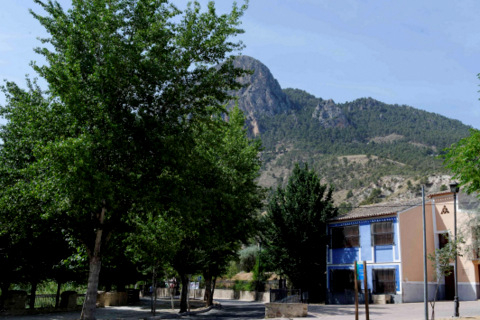 machinery, although the external paddles are in a poor state of corrosion, as well as a collection of equipment and tools relating to flour production.
machinery, although the external paddles are in a poor state of corrosion, as well as a collection of equipment and tools relating to flour production.
The existing exhibition is on the two floors of the mill, showing the equipment used for the many different processes which took place in relation to cleaning, grinding, sifting and separating the flour from the bran .
- Cleaning. Machinery such as the sieve drum and the frapor prepared the grain for grinding, remove husks, stones and other impurities from amongst the wheat.
- Grinding. The grain was deposited in a hopper, a type of inverted pyramid shaped box, from where it was fed in a controlled fashion, down between the millstones: one moving and one static.
- Sifting. The flour was taken up to the first floor and sifted via a system of graded sieves, giving the finest flour and coarser grades, according to the size of the particles generated.
- Final separation. The last separating process used an air mechanism to separate out the bran from any residual products, such as stones and create different grades of bran, used for animal feeds.
As well as the main machinery the museum has a display of other household implements relating to the use of flour as well as in the agricultural production of wheat.
Many of the items are made using esparto grass, which was the main material used for making ropes and twines before the invention of artificial fibres. Esparto production was an important industry in Cieza and was a vital element for all agricultural use, making ropes, harnesses, and everyday items such as baskets, shoes, beehives and even the cages used to grow and clean out snails prior to consumption. There are also wooden items used for making and baking bread on show in this same room, an interesting step back into agricultural history.
The windmill was acquired by the council of Cieza in the 1990’s for rehabilitation and restoration, and can be visited by prior arrangement with the tourist office as part of a guided group visit.
El Museo Molino deTeodoro
Paraje del Estrecho Paseo Ribereño s/n 30530 Cieza (Murcia)
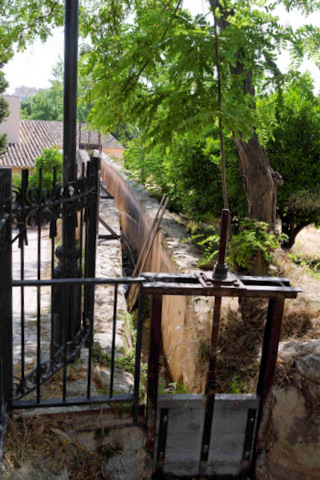 The Windmill is also the start point for the PR MU-11 walking route, an 8.5 km circular route which leads to Medina Siyasa, the Islamic settlement which was abandoned following the Christian Reconquist in 1243.
The Windmill is also the start point for the PR MU-11 walking route, an 8.5 km circular route which leads to Medina Siyasa, the Islamic settlement which was abandoned following the Christian Reconquist in 1243.
To book visits, contact:
Oficina de Turismo de Cieza, Plaza de España
Tel: 968 453 500
Click for contact box and map details, Cieza Tourist Office
For more information about Cieza, go to the dedicated Cieza section, accessed via the map box at the bottom of every page, or the town search box at the top of every page.










